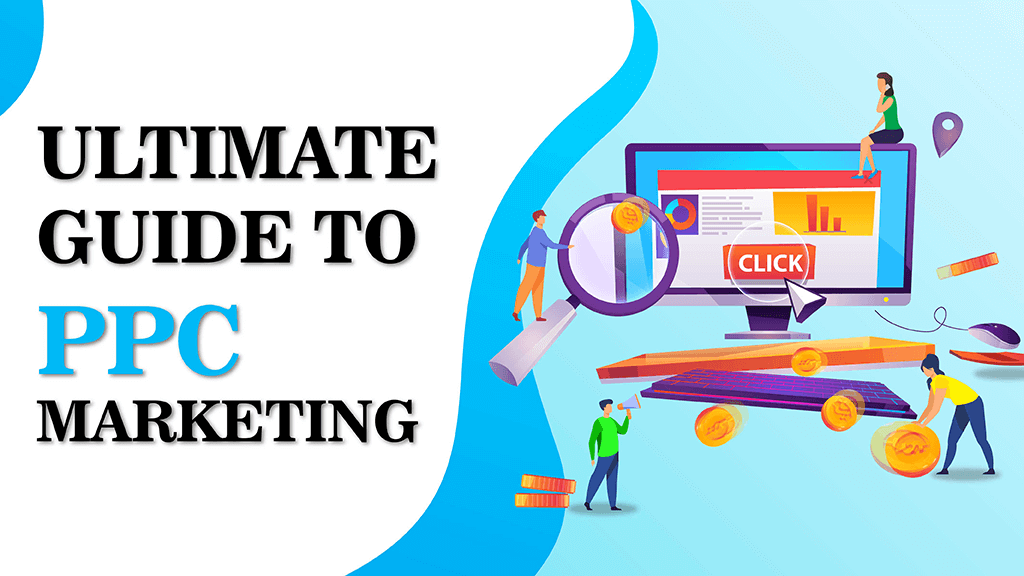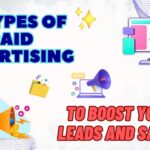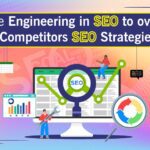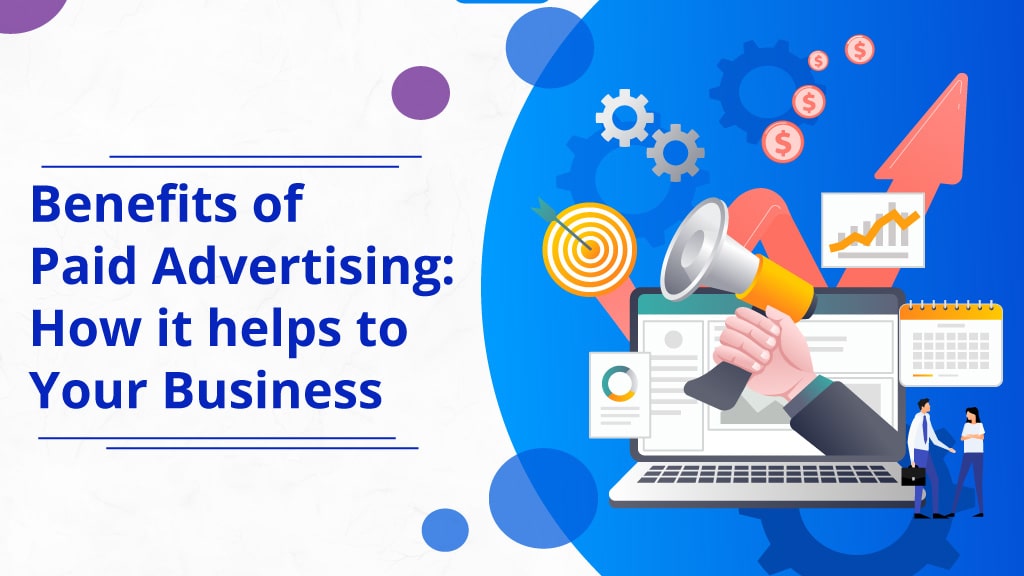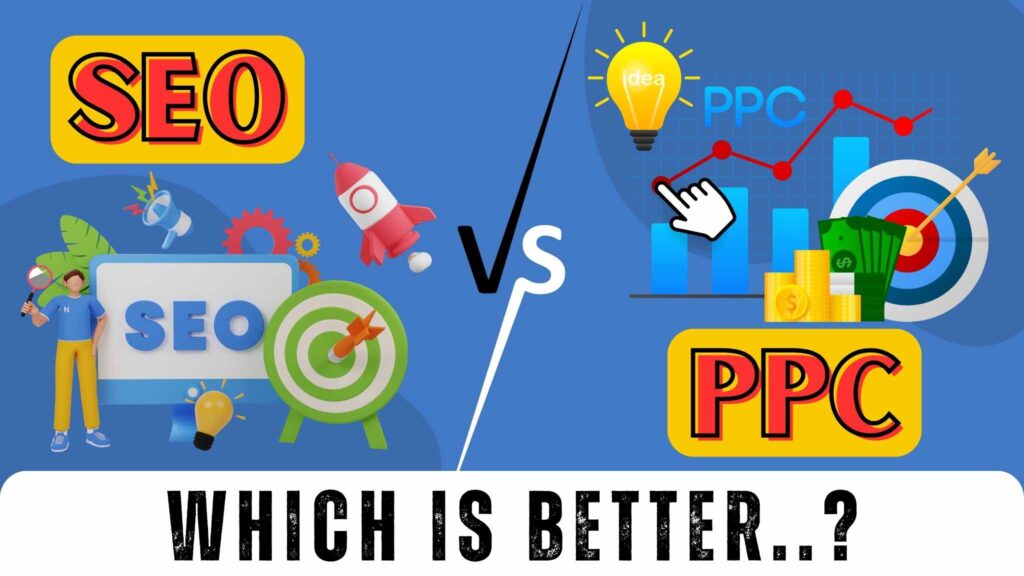Table of Contents
ToggleWith billions of clicks happening every day, do you know that now you can track those clicks and only pay if your desired objective is met?
How? Simple: Switch to PPC Marketing.
74% of brands agree that PPC marketing boost their business growth by 80%, and 64% of brands are already planning to increase their PPC budget in the next 12 months.
PPC, or pay-per-click, is an online marketing strategy where advertisers pay only when their ad is clicked. It can be seen on SERPs (search engine result pages), websites, social media platforms, mobile apps, and many other platforms in the form of text, images, video, or a combination of all three.
PPC can generate great leads for you when used properly. A flawless user journey can result in a significant return on your PPC investment, which you’ll learn how to execute later in this article. Let’s get to know some of the HOWs of PPC.
How does PPC work?
Pay-per-click (PPC) advertising lets you pay a charge to have your website, product, or service appear on the SERP or other digital platforms. When a user puts in a certain set of keywords or phrase(s) into PPC platforms such as Google, social media, mobile apps, etc., sponsored ads appear in front of the user. These ads produced by you to drive traffic to your website will appear on these platforms, and you will only be charged if someone clicks on them.
When someone searches for a keyword related to the advertised product or service, the hosting platform digs into the pool of ads and an auction takes place for the keyword. Depending on various factors such as the bid amount for the keyword by the advertisers, ad quality, landing page quality, and historical CTR, a winner will be decided, and an ad will appear related to the user’s search query.
These ads link to the website or landing page, and their attractive and enticing content makes the viewer turn into a customer.
How to craft your PPC Marketing Campaign
- Instant traffic: A PPC ad is an effective way to attract immediate traffic to your website. These ad campaigns appear at the top of the search results page, providing the exact product or service that the customer is looking for. However, in order to guarantee a high click-through rate and a profitable return on investment, it’s critical to precisely target your demographic, use relevant keywords, and write compelling ad copy.
- Cost-effective: Compared to other forms of advertising, with PPC, you have the option to configure your campaign’s cost so that you only pay when someone clicks on your ad. PPC enables precision targeting, which may increase conversion rates and improve returns on investment. They are very cost-effective, as the return on every click of a PPC ad is much higher than the amount invested for the campaign.
- Great control: PPC ads allow for great control over your campaign budget as you can set your own bid amount for each keyword. If the campaign shows a positive result, you can immediately scale up the campaign. Additionally, you can always pause or stop your expenditure on ads if you want to take a break or if your ad campaign fails to earn a profit. You can also control these ads to display on a specific date and time as per demand.
- Increases brand awareness: A PPC ad campaign helps you reach potential clients who may not have previously heard of your business by showing your ads to a potential audience. Continuous exposure to your brand via PPC ads will lead to higher and better brand recall among the consumers who are actively searching for the goods or services you provide. PPC marketing can also direct traffic to your website so that potential buyers can learn more about your company and the products and services you offer.
- Highly targeted: PPC ads let you precisely target your ideal customer through specific keywords, targeted demographics, location, interest, and more. It ensures that the ad reaches the right audience, which boosts lead generation and conversions.
- Measurable: With the help of various digital tools and data analytics software, the results-driven through performance marketing can be easily tracked. This allows businesses to see how their campaign is performing and then optimize it to improve it by targeting different segments and demographics.
How does the keyword work in a PPC campaign?
The purpose of using relevant and highly targeted keywords in PPC ads is to match the ad to pertinent user search queries. The ad may show up in the search results if a keyword in it matches a keyword in the user’s inquiry. This enables advertisers to specifically target their advertising to users looking for goods or services connected to the keywords in their ads. The selection and use of keywords are essential for a PPC campaign’s success since they have a direct impact on the relevance and visibility of the advertisement to the intended audience.
Negative keywords
Advertisers should also focus on negative keywords to ensure that their ads are not shown for irrelevant search queries.
Confused?
Along with positive keywords, negative keywords are also crucial in order to increase the effectiveness and efficiency of PPC ads. They are used to block the display of ads to users who are not relevant, reducing ad costs and increasing ad relevance.
For instance, if a business is advertising men’s T-shirts, it might use “women’s” or “children’s” as negative keywords to stop its ads from appearing when people search for those categories of apparel. This increases the likelihood of receiving relevant clicks and conversions while also assisting in focusing advertising spending on the intended audience and reducing unnecessary expenses.
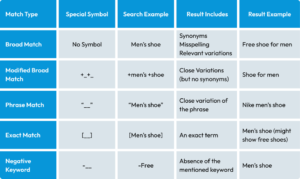
How many platforms or channels can you use for PPC ads?
Google Ads
Google Ads (formerly known as Google AdWords) are one of the most popular and widely used PPC advertising networks. It allows advertisers to display ads on Google search engine results and other Google-affiliated platforms such as shopping, YouTube, and more.
Reach: Over 42 billion searches monthly
Ad formats: Search ads (text), display ads (images), and video ads.
Pros:
- Highest global reach as it is the most used search engine platform.
- Various free analytics tools are available, such as Google Analytics, to optimize the ad campaign.
- Audiences on Google’s search engine are high-intent audiences, which means there’s a high chance of a conversion.
Cons:
- It has a high level of competition because it is the most popular and widely used platform for PPC ad campaigns.
- The ad spends on bidding on keywords makes the CPC high, which means they are costly, so it’s hard for low-budget businesses to get a good return on ad spend (ROAS).
- High chances of fraud clicks which can add extra money to your ad spend with no ROI.
Microsoft ads
Microsoft ads (previously known as Bing Ads) allow advertisers to display ads on Bing search engine results and other Microsoft-partnered search engines such as MSN, AOL, and Yahoo! It functions similarly to Google ads, where advertisers must pay for each click, and is a great alternative with a low PPC rate.
Reach: 13+ billion searches per month
Ad formats: Search ads (text), display ads (images), and video ads.
Pros:
- In comparison to Google ads, Bing ads have a lower CPC rate.
- Less competition for popular keywords means it’s easier to rank first with a lower bid price.
- One-third of the worldwide search market share.
Cons:
- Less reach as compared to Google’s ad platform
- Limited options for display networks and partners.
- Microsoft ads also attract click fraud, which can add extra money to your ad spend with no ROI.
Facebook or Meta ads
A Facebook ad is a form of social media advertising that uses an audience-based platform. Here, advertisers should focus more on the audience than keywords, such as their interests, demographics, income, etc. Ads through Facebook can also reach billions of audiences using platforms such as Instagram, Messenger, and the Facebook Audience Network.
Reach: 2.6 billion users per month
Ad formats: Single image, carousel, slideshow, news feed video, story, reels, messenger ads, and more.
Pros:
- Facebook is one of the most popular social media platforms, creating lots of visibility among wider audiences and increasing brand awareness.
- No need to spend on keyword bidding, the ad will target the audience demographic and show it to relevant customers
- Visual content on Facebook can easily stand out with its eye-catching visuals and graphics.
Cons:
- The audience on Facebook may not have purchasing intent, making it hard for conversion or sales.
- It targets a wide range of audiences (no specific age, gender, or location), so it’s hard to target any specific group of audience.
- If your ad is annoying or if your audience is not interested in it, they can opt to hide it. This can lower the quality of your ad’s ranking and restrict its appearance, making it less likely to rank high.
YouTube ads
Ever waited through the advertisement at the beginning of the YouTube video? Sometimes they are skippable, but sometimes you watch the whole ad and may get excited to know more about it.
What about placing your brand this time to get the best and longest visibility? YouTube ads are hosted by Google and target the same audience, reaching millions of users.
Reach: Over 2 billion log-ins per month
Ad formats: Skippable ads, un-skippable ads, bumper ads, out-stream ads, YouTube shorts, Discover, or in-feed video ads.
Pros:
- Exposure to a large audience because they are available to the audience during their leisure time.
- YouTube ads are mostly video ads, which means your ad will have almost all the information you need in an effective and eye-catching way.
- You can opt for non-skippable ads, ensuring that they reach and are watched by the audience without being skipped.
Cons:
- Ads on YouTube are skippable, which means you have to create impact in the first 5–15 seconds. If your ad fails to do so, then it is of no use.
- It targets a wide range of audiences (no specific age, gender, or location), so targeting any specific group of audience is challenging.
- Conversion intent is very low in a YouTube ad because the audience is not in the mood to buy.
Instagram ads
Instagram ads are not separate; they are owned by Facebook, so the ad campaign on Instagram is actually handled by Facebook’s ad platforms.
But you can choose only the Instagram platform if your targeted audience is only on Instagram. In recent days, Instagram users as compared to Facebook have increased more rapidly.
Instagram users are mostly young people and influencers, which can benefit your brand if your targeted audience includes them.
Reach: More than 1.2 billion monthly active users
Ad formats: Single image, carousel, slideshow, news feed video, story, reels, messenger ads, and more.
Pros:
- Instagram users are highly active and engaged in the content they see while scrolling through their feeds in their spare time.
- They provide immersive options to advertise, such as images, videos, reels, influence marketing, etc.
- Instagram ads are wrapped into Facebook ads, which make your ad visible on various other platforms, increasing brand awareness.
Cons:
- If your ad is not attractive or effective, sometimes it can be hard to grab the audience’s attention while they are scrolling.
- An Instagram ad’s conversion intent is very low because the audience is not looking to buy.
- It targets a wide range of audiences (no specific age, gender, or location), so it’s hard to target any specific group of audience
LinkedIn Ads
If your targeted audience is made up of professionals, then this platform is best for your ad. Through LinkedIn ads, you will reach well-educated and business-savvy audiences. They are more appealing to the audience if your brand is beneficial to their job or company.
Reach: Over 850 million LinkedIn members (2023 reports).
Ad formats: Single image, carousel, slideshow, news feed, message ads, event ads, and more.
Pros:
- It’s best for B2B businesses and can create great visibility among active professionals for your brand.
- An excellent way for email marketing (direct marketing), as many business professionals, link their email addresses with their LinkedIn accounts.
- Creates a platform with less competition, as very few brands will target this demographic audience on LinkedIn.
Cons:
- Limited to only business professionals, so it’s hard to target other sets of audiences.
- Generally, the CPC for LinkedIn ads is high.
- It allows only one type of campaign to be created at a time, which can make a cluttered structure if you want more than one ad.
Twitter ads
Twitter ad platform is perfect if your targeted audience is both B2B and B2C. The best thing about Twitter is that it has both types of audiences, i.e., you can target the audience with keywords (hashtags) as well as audience-based targeting. Unlike other platforms, Twitter has no network partners, which means your ad will be available only on twitter.com and the Twitter app.
Reach: Over 450 million monthly active users
Ad formats: Text ads, image ads, video ads, carousel ads, promoted ads, and more.
Pros:
- Compared to all other social media platforms, Twitter is the cheapest. So, the average cost of CPC on Twitter is very low.
- It offers powerful targeting because you can target not only by the audience but also by keywords and hashtags.
- Twitter also provides a text ad option, which brings a native (natural) feel to your brand.
Cons:
- Standing out and driving engagement on Twitter can be hard because Twitter posts get easily overwhelmed.
- Twitter ads have no partner networks, which means your ad will be limited only to twitter.com and the Twitter app.
How much does a PPC ad campaign cost?
PPC pricing is influenced by a number of variables, including your preferred ad platform, your company’s needs, the competition, and your target location. On average, businesses invest around $200 million every month, or even more, in PPC management.
Wrap-up Tips
PPC enables you to scale your business by connecting with millions of users who click on the top search results, boosting sales in less time and at a lower cost by spreading brand awareness across a variety of websites and platforms. It enables you to optimize your campaign while it’s running, and you can also easily calculate your ROI, which is difficult to do with many traditional marketing strategies.
NOTE: The ranking of the ad does not only depend on the amount of keyword bidding but also on the ad’s relevance, landing page experience, and CTR.
Still, confused about which platform is right for your business? We are here to help you choose one to target your ideal customer with less competition and a high reach. Get started NOW!
Why US?
Apto Digital is one of the leading digital marketing agencies in Bangalore, India. With the best-skilled digital marketing experts, we bestow an incredible lifestyle of working for our clients by aligning their revolutionary ideas and helping them successfully achieve their objectives.
Our Experts have over 5 years of experience in digital marketing services. We at Apto have meta expertise in Search Engine Marketing, Search Engine Optimization, UI UX Design, Social Media Marketing, Pay Per Click Services, Email Marketing Services, Website Design and Website Development. With our fortune of expertise and digital lifestyle, we provide very cost-friendly digital marketing solutions with higher ROI for enterprises, SMEs, and startup’s.
